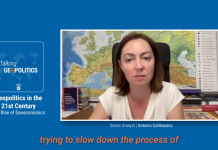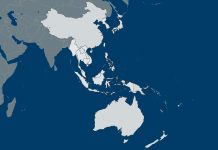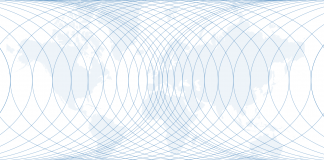The global medical community appears to have devised a strategy for mitigating the coronavirus that depends largely on quarantine, or limiting contact among the infected and potentially infected, thereby limiting the virus’ spread. No one expects this strategy to eliminate the virus, of course. The hope is to keep it at bay long enough for it to fade away on its own or, as many experts believe, die in the more hostile conditions of warmer weather. In the meantime, it’s possible that scientists will develop more effective treatment for the disease it causes.
This is all speculative. What we know for sure is that the world’s governments are kicking the can down the road, hoping that later is better than now. It’s not an irrational plan, but it does come with economic costs, not the least of which involve supply chains. What we need to survive must travel from where it’s made to our homes, and every step along the chain is at risk of breaking down.
For our purposes, there are three indispensable supply chains: food, pharmaceuticals and energy. The need for food is obvious. The inability to obtain pharmaceuticals for pre-existing medical conditions could kill more people than the coronavirus itself. Electricity is essential to refrigerate foods and possibly pharmaceuticals, allow information to flow, and drive facilities needed for the supply chain. Gasoline must be delivered if the trucks that distribute food and pharmaceuticals are to run. There are undoubted other supply chains we have missed, but these are the essentials to get us through until the weather turns.
When my wife and I shop for groceries, we order online so that it is ready for pickup when we get to the store. Two weeks ago, we were able to place an order for same-day pickup. We ordered a two-week supply since we thought we’d be traveling a bit and wanted to make sure we had plenty of supplies when we returned home. (I saw this coming and my wife thought me mad. Please note I finally got one right.) Last week, however, we ordered online for some additional supplies, and there was a three-day wait. On Sunday, we tried again, and the earliest we could pick it up was in eight days. We checked with Amazon, the king of supply chains, and their wait on some basic food and household items was anywhere from five to 10 days. Some items were completely unavailable.
This means there are people who are just beginning to stock up who can’t because the initial surge in demand has overwhelmed supermarket stocks and has overloaded the supply. Warehouses undoubtedly have substantial resupply, and their sources – food packagers and the like – are also able to obtain food from producers. The food supply chain is robust, but we have seen a simple breakdown due to demand that may have some impact in the next few days.
But the problem is that the food supply chain and social distancing, not to mention quarantine, run against each other. No matter how automated it has become, it is staffed by people who deliver products to people. Warehouses still employ human workers. Truckers and loaders go from one node in the supply to the next. Stockers and cashiers touch food packaging. The list goes on. It is not that the quarantine is ineffective; it’s that it runs counter to the principles of its intent.
There is a social cost in all this too. Poor people cannot buy three weeks of food at a time. And the entire picture is complicated by the whims of workers, who may decide that they need their wages to survive or may determine it is safer to forego their jobs. The workforce will contract, possibly at all levels. These all involve the availability of workers who choose not to quarantine in spite of the risk to themselves and their families, a rational structure of demand from an economically variegated society, and the inevitable rage that builds under pressure.
The pharmaceutical industry has these problems too, plus the breakdown of the system would be disastrous. The maintenance of power plants involves numerous people, more when there is a problem. It requires the delivery of fuel along pipelines that must be maintained, and storage and production facilities. (This is to say nothing of the upkeep of water purification plants, pumping stations and all other essential services.)
My point is two-fold. First, a total quarantine is impossible, and second, the more aggressive the quarantine is, the more pressure it puts on vulnerable supply chains that sustain life. The systems require staff, and the staff cannot avoid contact with the public.
This is not to say that the quarantine is not a reasonable solution. Under the circumstances, it is the only reasonable solution. It may even be as effective with the number of essential workers breaking. But it is important to bear in mind that supply chains, no matter how robust, can break, and it takes armies of workers to maintain them. The cycle that is envisioned by the quarantine confronts the cycle that maintains the supply chain. The question is the math of the quarantine. To what degree does the workforce maintaining these and other supply chains – and their end-users – change the math. I assume that has been calculated and that it is understood that these supply chains cannot be allowed to break and to some extent will sustain the virus’ spread.






 Special Collection – The Middle East
Special Collection – The Middle East